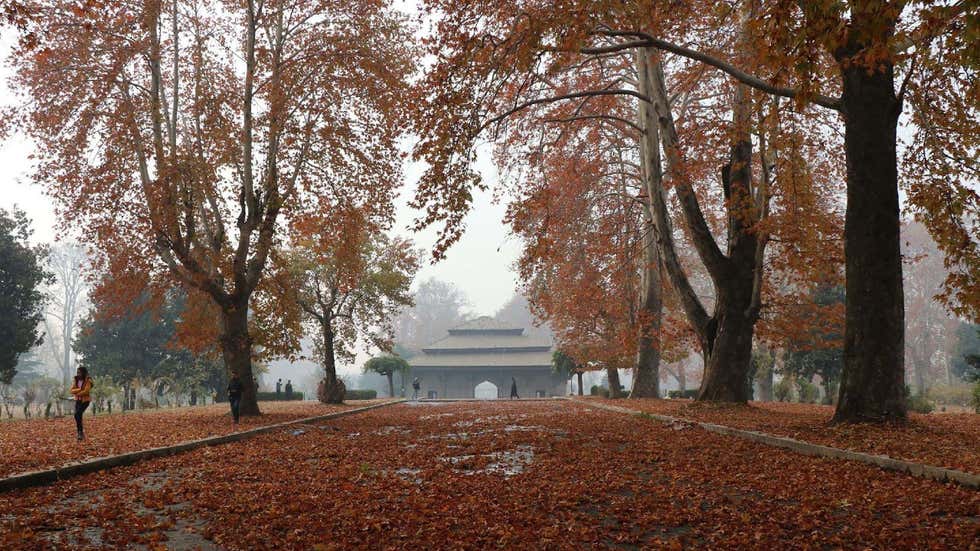Representational image.(Bilal Bahadur/BCCL Srinagar)
The belief that trees could limit global warming and climate change due to prolonged growing seasons has taken a hit with a new study showing that tree leaves are changing their colour earlier than normal. The new findings overturn the belief that warmer temperatures delay the shedding of leaves that marks the beginning of autumn and suggest earlier shedding of leaves in temperate countries.
Changes in leaves colour and their shedding was long-known to depend on changes in temperature and length of the day. Previous research had shown that global warming leads to a prolonged spring as the number of colder days reduce. The hope was that the prolonged growing season would enhance carbon sequestration—the process of capturing and storing atmospheric carbon dioxide—by trees. The new study shows that this may not be the case in future.
Trees can store only limited amounts of carbon
According to this research, the amount of carbon that can be absorbed by deciduous trees had a limit and once the limit was met, no more carbon could be absorbed. And once this limit is reached, the leaves start changing its colour and eventually shedding. The limit depends on the physical structure of the plant, mostly the inner vessel that transports nutrients and the availability of nutrients, particularly nitrogen.
These new findings show that increased temperatures do not mean that plants can take up more carbon dioxide. According to the predictive model projections in the study, by 2100, when the growing season is expected to be 22 to 34 days longer, the falling of leaves would be 3 to 6 days earlier than they are now.
With these startling revelations, the research has important implications for climate change modelling. If the amount of carbon stored by deciduous trees in temperate nations like the UK does not change year on year, regardless of the prolonged growing season, then the carbon dioxide levels in the atmosphere will continue to increase at a higher pace compared to what was previously expected. The resultant positive feedback loop could push the world into a rapidly warming climate, with limited ability to remove carbon from the atmosphere.
Increase in photosynthesis leads to earlier autumn
The research, led by Deborah Zani at the Swiss Federal Institute of Technology studied the relation between the timing of colour changing of leaves to plant growth in the preceding spring and summer. For the study, researchers examined European tree species—silver birch, English oak and horse chestnut. They studied the amount of carbon dioxide absorbed by each tree every season and how it affected autumn.
They used the data from the Pan European Phenology Project, which had recorded data for 65 years. Analysing the data, the researchers found that the rate of photosynthesis has increased in these plants, leaves changed colour and fell much earlier compared to before. For every 10% increase in photosynthesis over spring and summer, the trees shed their leaves eight days earlier on average.
“For decades we’ve assumed that growing seasons are increasing and that the autumn leaf-off is getting later. However, this research suggests that as tree productivity gets higher, the leaves fall earlier,” said Prof Thomas Crowther at ETH Zurich in Switzerland, who was a part of the research team, in a media statement.
Article Credit: weather
